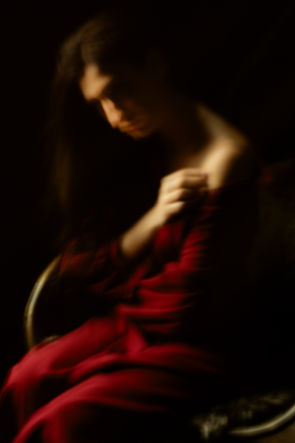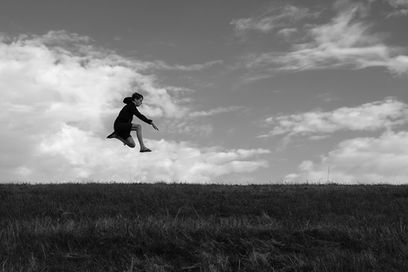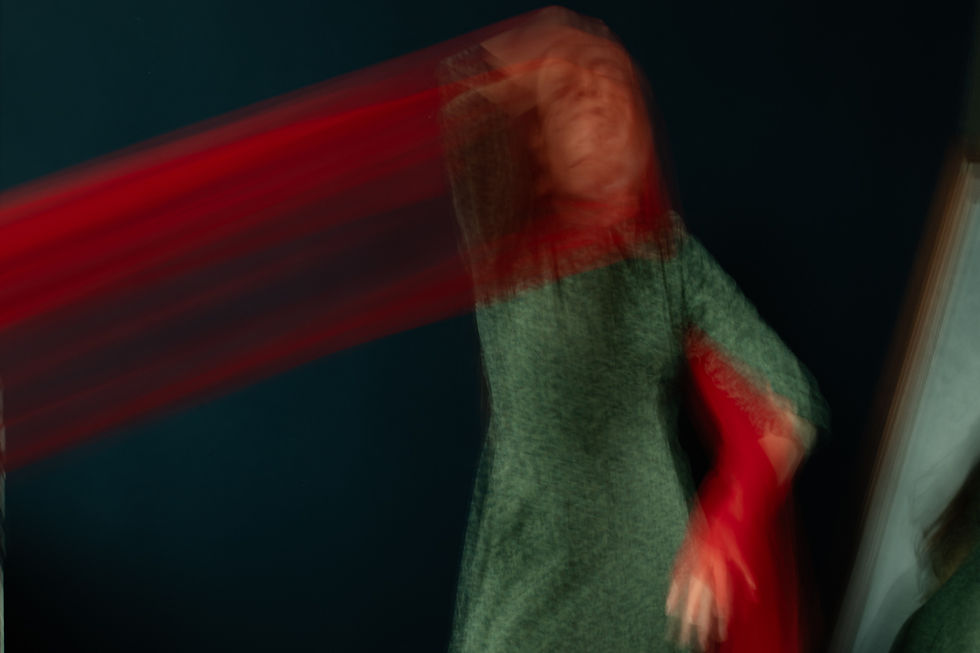
INTERVIEW
November 15, 2024
LIMINAL SPACES
Photography by Anna Tut
Interview by Melanie Meggs
In contemporary photography, Anna Tut emerges as an artist focused on exploring profound themes through her work. Born in the far east of Russia, on the border of China, Anna’s geographic origins mirror the liminal spaces she captures in her work — spaces between the seen and unseen, the known and unknown, the external and internal. Her artistic journey began as a departure from her profession in economics, a shift that spoke to the power of artistic reinvention. This personal transition shaped the deeply introspective nature of her photography, embracing it as a means of personal expression and discovery.
At the heart of Anna’s artistic practice is a desire to create work that resonates beyond aesthetics, offering her audience projects that provoke thought, evoke emotion, and carry significant social commentary. For her, photography is not simply a medium to capture moments, but a powerful tool to convey messages — each photograph is engrained with meaning, each project is a statement or call to action. Her work reflects her belief that art has the ability to shape perspectives, ignite conversation, and inspire change.
Anna’s interdisciplinary approach, applying embroidery, appliqué, and collage to her photography, results in photographs that are not merely aesthetic but carry layers of meaning. This fusion of mediums allows her to create images that are as textured in their visual language as they are rich in narrative depth. These elements act as visual metaphors for the emotional, psychological, and social layers that define a person’s experience.
Her latest series, “Women”, is an exploration of the complex role of women in contemporary society. As much as women have gained rights and freedoms, they still often face immense pressure — juggling roles in society, work, and family life. Anna’s series transforms her subjects into visual stories that articulate the tensions and contradictions women face today. Each image is meticulously composed, with every detail — lighting, expression, and gesture — carefully thought out to evoke a response.
The portrayal of women in Anna’s work is imbued with symbolism and a sense of timelessness. Her use of shadows, color palettes, and fabric all contribute to an air of mystery that speaks to the hidden depths of female identity. In her photographs, there is a duality — a blending of strength and vulnerability, of power and grace. The 15 women featured in her project, aged between 25 and 60, are depicted as both subjects and objects of contemplation, inviting the audience to reflect on their own understandings of womanhood. In doing so, Anna challenges the viewer to consider not just what they see on the surface but the inner world that each woman inhabits — a world that celebrates the idea that every woman is an independent, multi-dimensional individual.
In this interview, we explore Anna Tut’s artistic philosophy and delve into the inspirations behind “Women”. We discuss how she approaches the delicate task of portraying women in a way that honors both their individuality and their collective experience. Through her art, Anna aims to bring attention to the complexities of femininity, challenging societal norms and highlighting the often, unseen emotional landscapes women navigate daily. Her portraits act as both mirrors and windows — reflecting the reality of womanhood while offering glimpses into the unspoken depths of her subjects’ inner lives.
We also explore Anna’s commitment to pushing the boundaries of photography by integrating traditional craft techniques with digital artistry, creating a distinctive visual language that is all her own. Anna Tut’s work reminds us that art can be a powerful tool for dialogue and change. She believes that photography, beyond its aesthetic function, should inspire reflection and provoke discussion. As Anna looks to the future, she remains committed to creating projects that resonate on both a visual and intellectual level. For her, these projects are more than just an artistic endeavor; they are an essential contribution to the broader conversation about gender, identity, and societal roles.
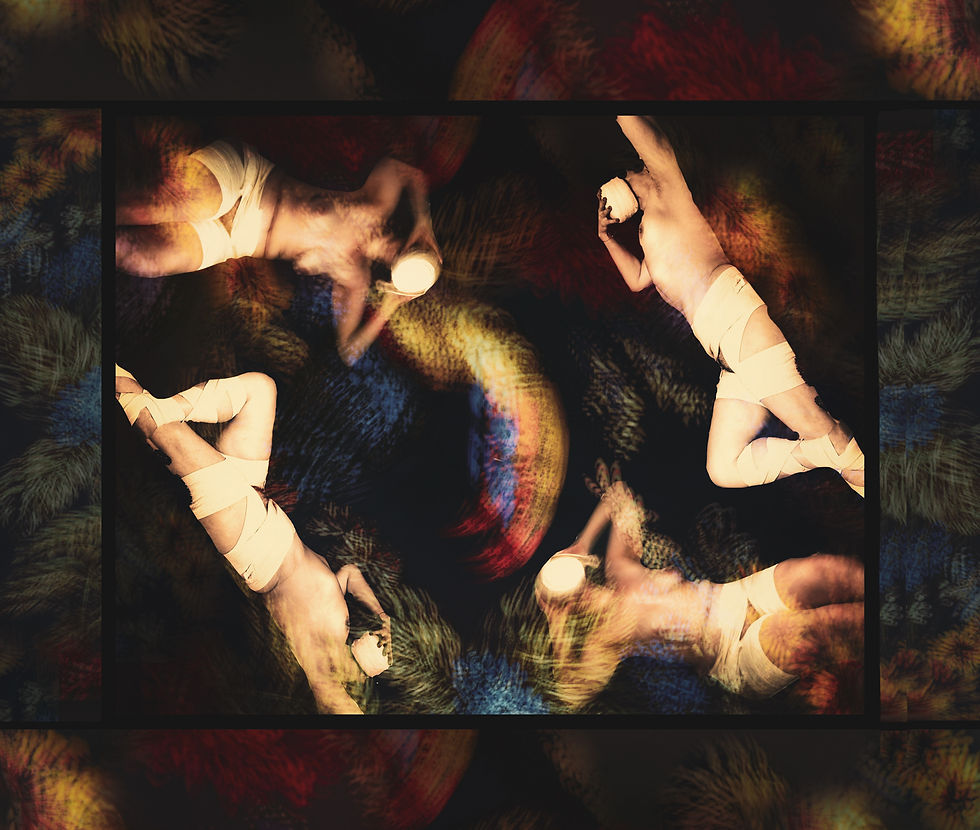
“The heroines of my photographs always like the result. Women are often dissatisfied with their appearance and are tired of the portraits they typically post on social media. They want more complex images of themselves. The visual pressure on women is very significant, and when they receive an image of their persona that is full of meanings, it becomes a very unusual experience.”
IN CONVERSATION WITH ANNA TUT
THE PICTORIAL LIST: Can you share how your personal journey and your experiences growing up in the far east of Russia have shaped your artistic vision, and in what ways do you think these influences manifest in your photography? What moments stand out as pivotal in your development as an artist?
ANNA TUT: I was born in a unique region and from childhood, I witnessed unusual creativity shaped by folk crafts historically practiced by the indigenous peoples of these territories: the Nanai, Udege, Koryaks, and others. The so-called petroglyphs of Sikachi-Alyan are included in the UNESCO World Heritage list, and the ornamental art of the peoples of the Amur region is noted for its originality and beauty. From an early age, I encountered folktales and myths that were unusual and mysterious. Uncommon musical instruments are also characteristic of the art and culture of my region. I grew up immersed in this culture, which ultimately shaped my cultural identity.
TPL: As an interdisciplinary artist, you integrate various mediums such as embroidery, appliqué, and collage into your photography. Can you elaborate on your motivations for combining these different forms of expression, and how you believe this fusion enriches the narratives within your work? Additionally, how do these techniques interact with your photographic images to convey deeper meanings, and what do you hope viewers take away from this multifaceted approach?
ANNA: In my opinion, photography as a medium in its pure form is insufficient for expressing the creative potential of an artist, which is why I have been engaged in interdisciplinary art for a long time. This allows for the creation of visually more complex works, as well as infusing them with more intricate meanings. I still love the classic portrait, but for the idea of my project, it was necessary to create an image. It is the image, rather than a portrait of a specific woman, that allows me to express my thoughts most accurately.
TPL: In your project “Women”, you focus on portraying women in a way that acknowledges both their individuality and their collective experiences. Can you describe your artistic philosophy regarding this delicate balance? How do you navigate the complexities of representing each woman's unique story while simultaneously addressing broader societal themes and issues that affect women as a whole?
ANNA: The balance between individuality and collective experience in each specific woman is not only difficult to capture but also to convey to the audience. I start by engaging with each woman, exploring her story, experiences, and dreams. These conversations help me see the uniqueness of each participant, but they also allow me to identify common themes that concern all women, such as the struggle for equal rights, the role of women in society, motherhood, careers, and personal ambitions. I choose a particular image or concept for my subject. I do not take straightforward shots; instead, I employ complex photographic techniques such as long exposure, incorporating fabrics and reflective objects into the frame. I always use meditative music during the shoots and encourage the women to move as she feels comfortable. During this time, I capture her movements and photograph what I believe she radiates. I almost never use photo editing software; for this project, it would feel "unfair."
TPL: In what ways do you aim for your work to influence discussions about gender identity and the emotional landscapes women navigate daily? How do you confront the challenge of ensuring that your portrayals resonate with a diverse audience, encouraging them to reflect on their perceptions of womanhood and the various roles women inhabit in contemporary society?
ANNA: First of all, I send my projects to curators and try to propose them to publications. I believe this way I can draw attention to the issues and questions I address in my projects. I can publish individual frames from the project on my social media, and sometimes they attract very angry and unfriendly comments, which makes it clear to me that my visuals have touched a nerve for someone.
TPL: As a photographer, how do you navigate the balance between technical skill and creative intuition in your work? Are there specific techniques or tools that you feel enhance your ability to express your vision, and how have these evolved over time?
ANNA: I always rely on my intuitive perception. And while my technical skills grow year by year, they are just tools for my mind, and I use them to expand the possibilities for bringing my ideas to life. After all, the idea is what matters most, and then each artist expresses it in their own way using the technical means available to them. This is freedom, and it is wonderful!
I believe that it is through personal images that we can speak to the global issues and legal questions affecting women around the world.
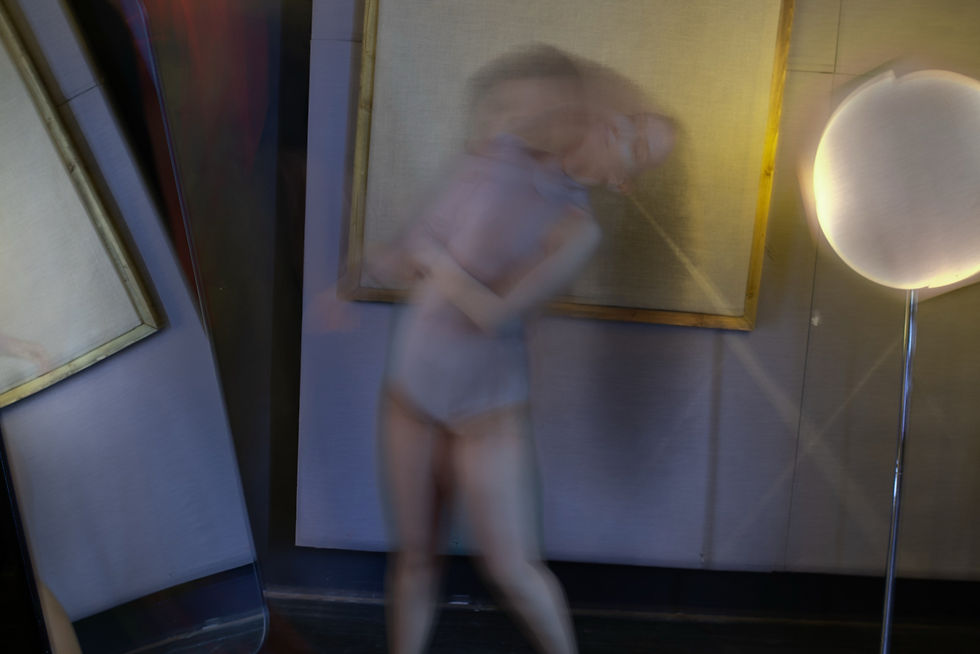
TPL: In your opinion, what role does storytelling play in photography, and how do you approach the challenge of conveying a narrative through your images?
ANNA: I love storytelling; for me, it is an inspiring tool for engaging with the viewer. However, storytelling does not suit every project. Complex projects often require philosophical texts and can be very difficult for an unprepared audience to understand. I have projects that incorporate storytelling, which are usually documentary projects, but I also have projects with fairly complex texts.
TPL: What has been your most significant challenge as a photographer, and how did you overcome it? How did this experience shape your understanding of resilience in the creative process, and what lessons did you carry forward into your future work?
ANNA: If we talk about the specifics of the work, then the work of a photographer like me is always about working with people. It’s important to spend even more time communicating with the subjects than on the actual shooting. I am naturally impatient, and I find it challenging to demonstrate patience and understanding that the subjects need time to get accustomed to the process. However, I am grounding myself more and more and allowing the process to flow at its own pace. As a result, I take great pride in myself because the response from the subjects is so much greater when there is no pressure involved.
TPL: Looking back on your journey as a photographer, are there particular influences — be it other photographers, artistic movements, or life experiences — that you can pinpoint as having a profound impact on your style and approach? How have these influences evolved over time?
TPL: In a world increasingly dominated by digital imagery and social media, how do you maintain a sense of authenticity and personal expression in your work? What strategies do you employ to ensure your photography remains true to your vision amidst external pressures?
ANNA: There are indeed a vast number of digital images, and you are right that their purpose increasingly boils down to quickly conveying information. On the other hand, the artist's task is the exact opposite. Art is primarily about contemplation and reflection. Yes, art can utilize digital imagery, but it differs in its purpose, which in turn leaves an imprint on the visual itself. This is a very noticeable distinction. For now, I view artificial intelligence as a technical tool that expands the possibilities for the creator.
TPL: As you look toward the future of your artistic practice, what types of projects are you currently considering, and how do you envision these endeavors evolving over the next 3 to 5 years? Are there specific themes or issues you feel compelled to explore more deeply, and how do you see your style or approach transforming as you continue to grow as an artist?
ANNA: I am drawn to two types of projects: fine art projects and documentary projects. Currently, I am working on an art project about the theme of Anthropomorphic Nature, while simultaneously developing a documentary conceptual project about discarded items. I have enrolled in a two-year program at an institute of contemporary art. I believe I need to enrich my knowledge in philosophy and contemporary art in order to create conceptually more complex projects. I think that my studies will change my approach and possibly my style. We'll see where this path takes me.
TPL: When you’re not behind the camera, what fun adventures or creative pursuits would we find Anna diving into, and how do they add a splash of inspiration to your photography?
ANNA: I love traveling and draw inspiration from it. I also enjoy cooking. All of these activities allow me to reflect, while travels enrich me with new visuals.

As an interdisciplinary artist, Anna Tut seamlessly blends photography with traditional craft techniques, such as embroidery, appliqué, and collage, creating multifaceted works that transcend the limits of a single medium. Her project “Women” offers a thought-provoking exploration of femininity, individual identity, and the collective experiences of women today. Through carefully composed images, Anna addresses the tensions between personal freedom and societal expectations, crafting portraits that speak to both strength and vulnerability.
Anna is dedicated to using photography for aesthetic expression. Each image is designed to provoke thought, challenge perceptions, and spark conversations about the issues she tackles — whether it's gender identity, societal pressures, or emotional resilience. Her work is both a visual and intellectual experience, layered with meaning and imbued with social commentary.
Looking ahead, Anna is poised to further push the boundaries of her medium. With plans to expand her fine art and documentary projects, and a growing interest in the philosophical dimensions of contemporary art, Anna is committed to evolving her practice. Her continued focus on deep thematic explorations ensures that she remains a compelling voice in the world of photography, one that encourages viewers to look beyond the surface and engage with the stories her work tells.








